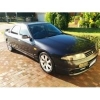R33 Skyline Number 9 On Top 10 Greatest Ever Sports Cars
Announcements
-
Similar Content
-
Latest Posts
-
I'm seeing torque specs all over the place for the OUTER tie rod, but none for the INNER tie rod, where it connects to the steering rack. Even in videos, people are just tightening em up as much as they can with a wrench and that's it. Anything tightened down without torque makes me nervous. Anyone know what the spec is for it?
-
Hope you had a great time here in our tiny country. The JDM scene we have here is quite small, it's mostly BMW, Volkswagen with burble tunes haha. But the few JDM cars we do have in the scene are pretty nice. Some of my friends drive cool s14's too. Both built engines, red one makes abt 500, blue one abt 400 i think?
-
Ye good idea , would have never thought of something like that. Might aswell do it to every pulley and the balancer while I’m there
-
Use an LS1 or similar, via kit like Frenchy's. But.... It's probably not the alternator. It sounds like belt squeal, which would be because the pulleys are glazed. Rub every groove on the pulleys with 120 grit paper. Report back. Oh, and new belts afterwards too. The old new ones will be shitted up already.
-
Hello all I have 2 r34 sedans , one turbo one na, only recently aquired the na 34. Man what is with these things.... My turbo 34 started sounding like a super charger, it was screaming at anything above 4000rpm , I took the alternator apart and replaced the front bearing which is the only one I think you can access and it did not fix the issue so presumably the bearing in the rear of the alternator is gone. ( diagnosed it was the alternator by taking off the aux belts one by one to figure out which pulley or bearing it was ) My friend gave me one he had lying around, Installed it , it did not squeal for maybe 500kms and now its started to squeal again briefly on startup Recently got an na r34 and I replaced the timing belt, water pump + all the auxillirary belts. Runs amazing but it suddenly developed the same squeaking problem but significantly worse, Ive had my neighbour come down screaming at me because it was waking her up everytime I moved the car. It takes a good 2 minutes before it quietens down. Im yet to diagnose where its coming from but im fairly sure its coming from the alternator aswell. My question isnt about how to fix it but rather where can you get a new alternator for an rb25 neo??? Ive searched everywhere but I havent been able to find a direct fit oem type replacement thats not genuine. All the automotive stores sell an oex one - BXA035 - which I picked up for cheap through a friend with staff discount , got it home only to find the connector is completelty different.... As far as im aware bxa035 is for rb20/30's and after a bit of figuring out the bxa035 has an ev14 type connector, which is tiny compared to the rb25 connector. I actually had an ev14 connector lying around which I was considering just replacing the bigger plug with to get the alternator working but the bxa035 is rated for 70amp vs the rb25 alternators are 90amp ( or so ive been told ? ) That paired along with the fact im about to install an amp + sub in the back and I have the stock sized small battery Im not sure itll do the job unless anyone has another opinion? I know and have seen all the websites selling the ls1 alternator conversion kit but I am not going down that route, nor do I have the money to. Hopefully I can figure out how to get 2 brand new alternators for both cars. I would buy second hand which there seems to be many of but considering how common this seems to be im sure If I installed a second hand one it would start squealing in no time Or even better if anyone knows how to fix the issue directly with the alternator itself... Any input appreciated Thank you Link for bxa035 connector picture
-







Recommended Posts
Create an account or sign in to comment
You need to be a member in order to leave a comment
Create an account
Sign up for a new account in our community. It's easy!
Register a new accountSign in
Already have an account? Sign in here.
Sign In Now